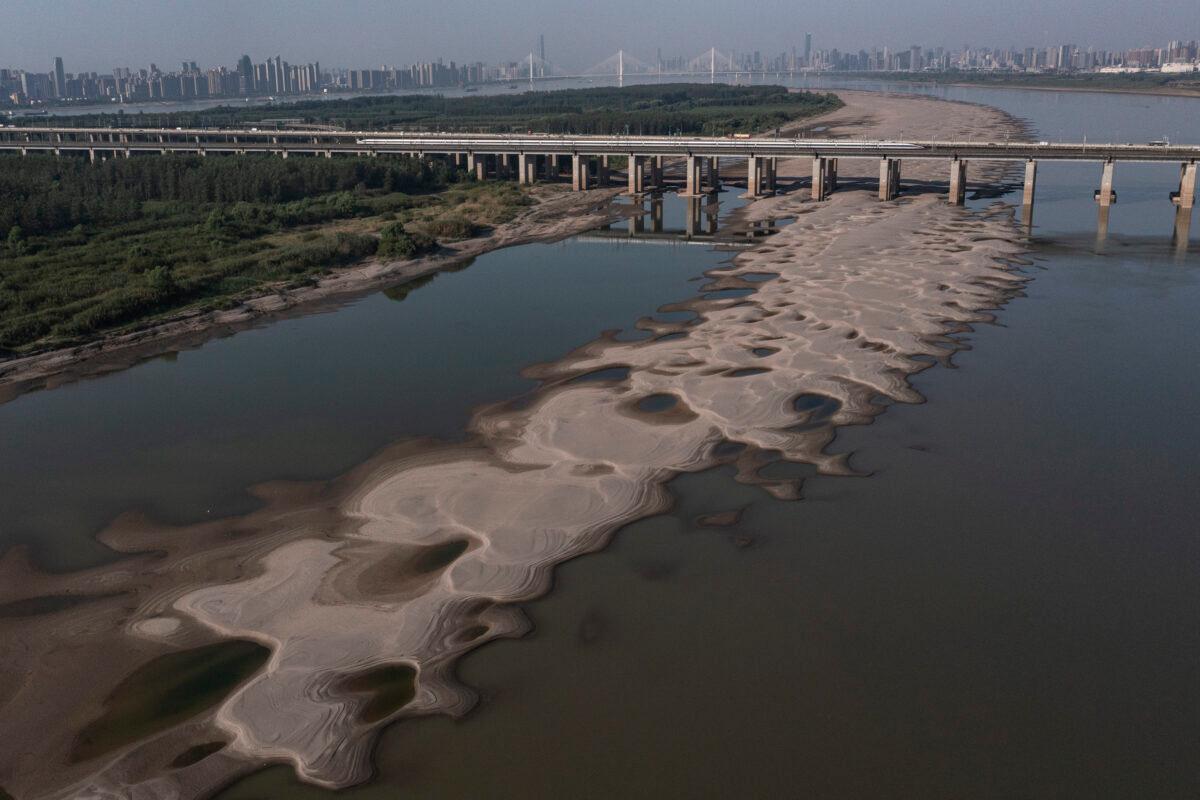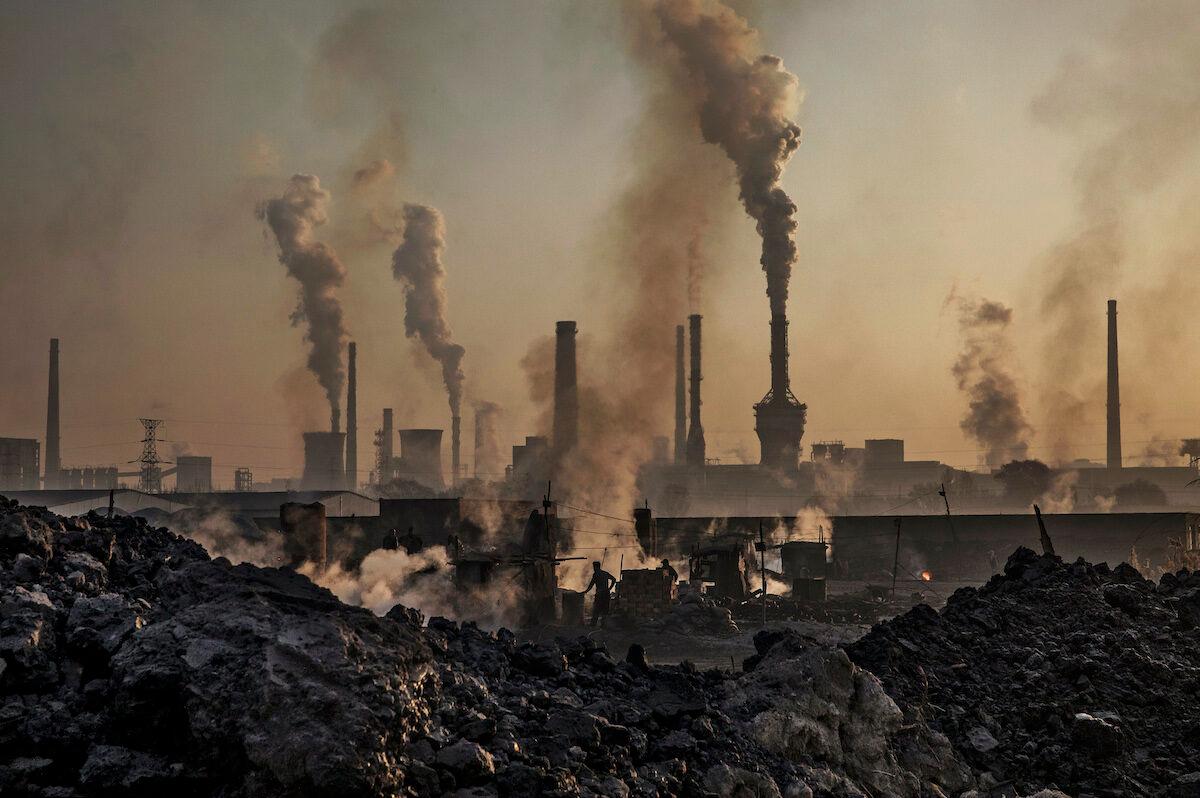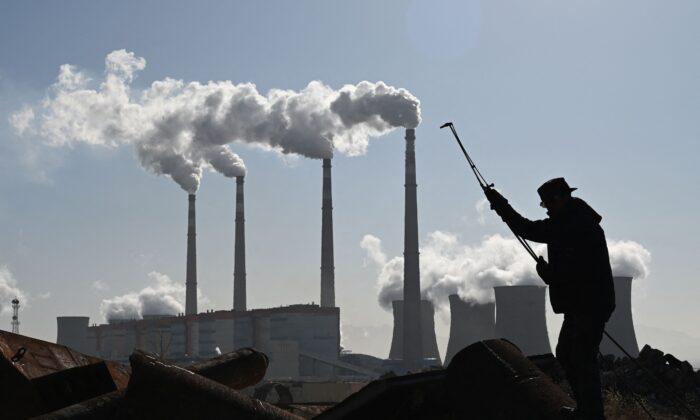Recent reports on coal power and mining industries show that the Chinese Communist Party (CCP) has run counter to its carbon reduction vow since last year. The subject of re-invigorating coal-fired power production is no longer dodged among Chinese financial experts, especially after drought-induced power shortages started in July.
The previously reduced use of coal power needs to be accelerated, said Cinda Securities, a Beijing-based financial service company, in a report on Aug. 25, citing the extremely high temperatures that have caused a significant drop in hydropower in major provinces such as Sichuan, which not only suffered electricity and production limits but also stopped supplying electricity to other provinces.
Another Beijing-based investment consulting company, Capital Securities, held a similar opinion in its report on Aug. 26, saying that global energy shortages will further drive up the prices of natural gas, oil, and coal; however, compared to natural gas and oil, coal has the highest price/performance ratio for power generation, so China should speed up coal power projects, it said.
Since CCP head Xi Jinping pledged to reach peak carbon emissions by 2030 and net zero emissions by 2060, coal power emission was somewhat restricted in the Chinese carbon market that operated last July.
Furthermore, in China, the carbon price per kWh of coal power is only RMB 0.03 (about $ 0.0043), less than 8 percent of the on-grid price, the report estimated.
In late 2021, more than half of the provinces imposed restrictions on electricity production as part of the CCP’s national campaign of carbon emission reduction. But after that, the authorities began to lift the restrictions on the coal power sector.

Extreme Weather Affecting Power Generation
Due to high temperatures, low rainfall, and subsequent drought, dozens of rivers and reservoirs in southwestern China were drained or their water levels dropped dramatically, causing power generation in major hydropower provinces such as Sichuan, to decrease by almost half.On August 27, Beijing required provinces to speed up the approval of new power generation projects, mainly by adding more coal and nuclear plants.
Compared to nuclear power, which takes a long time to set up (at least 10 years from design), the construction cycle for coal power is relatively short, usually only 18 months for a 600 MW unit.

China Accelerates Developing Coal Power
According to an industry development report by Cinda Securities, since power curbs and production cuts began in the second half of last year, China’s thermal power (mainly coal) investment started to rise after it had decreased for several years in a row.Citing data from the China Electricity Regulatory Commission, the report said that China’s thermal power investment continued to decrease between 2016 and 2020 and began to rebound after bottoming out in 2020; thermal power investment in 2021 grew 21.5 percent year-on-year to reach 67.2 billion yuan (about $9.74 billion) and in the first half of this year, the investment reached 34.7 billion yuan (about $5.03 billion), an increase of 71.8 percent year-on-year.
Coal Power Advantages in China
Nonetheless, according to Capital Securities, the development of coal-fired power generation is still the best option for China to solve the current power shortage problem in the face of global energy shortages.In addition to abundant coal resources, coal has a higher price/performance ratio compared to natural gas and oil. In other words, coal is cheaper than natural gas and oil to supply the same amount of heating capacity: if coal costs $1, natural gas and oil cost $2.11 and $1.41 respectively, comparing the average price per unit of heat.
CCP Carbon Emission Reduction
In October 2021, while easing the development of coal power, the authorities also planned to renovate coal power units in terms of energy saving and heat supply, reportedly to promote clean and low-carbon power.Application of that technology was reported to realize “ultra-low emission” and clean coal power in the coal chemical industry.
As early as last December, the authorities classified both coal and petrochemicals as raw material energy use and excluded them from the total energy consumption. This nominal division provides official support for the unrestricted use of coal power in the future.
With the CCP last month announcing its suspension of climate change negotiations, its immature carbon capture and storage and distribution technology may make it difficult to make a breakthrough in the near future, The Wall Street Journal reported on Aug.18.





